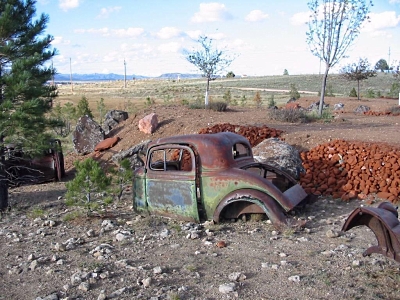
Professional photography is an excellent career choice for anyone who wants to get paid for using their creative talents. It's one field where age and college degrees aren't as important as a good eye, a quality product, and self discipline. Photography is a competitive field, however; so be prepared to start small, while you perfect your craft and build a portfolio of your best work. The tips below should help get you started.
1. Start out by speaking to other professionals in the field. They are normally willing to give advice to individuals interested in their field. Besides if you speak to the right people they will tell you the pitfalls and upsides right from the start. Ask if you can follow them around for a day of work.
2. Consider enrolling in a photography degree program, or taking classes at an art school. You'll make connections and get advice and critiques. Once you are ready, purchase the best equipment you can afford. Remember that this is an investment and will make a big difference in your future. Try sticking to name brand items to ensure you will have service and parts available when, and if needed.
3. Understand that your biggest investment should be your lens. They should be the removable kind that you can put on another camera body if you decide to upgrade later.
4. Study how-to photography books. Lighting and composition can either make or break a photograph, and there are many excellent step-by-step study guides that will teach you the techniques the pros use. Much of this information can also be found by using search engines (e.g: Google).
5. Practice to get experience. Shoot, shoot, shoot. Always having your camera handy will enable you to take photos in different places and of different subjects.
6. Evaluate each photograph you take. Ask others to critique your work. Put your questionable shots in a separate file, so that you can go back later and correct any mistakes on your photo editing software. Many pros will tell you that they hardly ever take a 100 percent perfect photo. Programs like Photoshop and/or Corel Photo Paint will always be handy when making a good photo great.
7. Strive for originality. Photo editors appreciate pros who can give an old subject a fresh look, so don't be afraid to experiment. When trying to take a great photo, you can sometimes take up to 100 or even more shots experimenting before taking the one you really want. Be patient and don't give up.
8. Build a quality portfolio. Buy a good quality leather ring binder, and take a handful of your best prints and put them in plastic sleeves. Label each one with your name, address and phone number, so when a client asks to see samples, you're prepared.
9. Invest in a photography marketing guide. This is the bible that most pros use to market their work. The best ones give complete contact information of magazine, greeting card, and book publishers.
10. Enter photography contests. This is an excellent way to start building a resume of credits, especially if you win.
11. Ask small businesses in your area if they would feature a small exhibition of your work in return for occasional photographic services.
12. Make CDs of all your work. This is especially important for digital photographers. Many clients nowadays actually prefer viewing photos on CDs.
13. Copyright your work. You can fit hundreds of low resolution shots on a CD and copyright all of them for one low fee as apposed to copyrighting individual "good" photos. You can do this by copyrighting it as "the collective work of____".
14. Keep good records of your expenses. You will need them for your tax returns. You may also be able to deduct certain expenses (like your camera, PC, etc) and receive a rebate.
15. Take courses on small business management if you are considering opening a studio. There's a lot to learn up front so that you don't make costly mistakes down the road. Explore different types of photography, such as photojournalism, documentary photography, commercial photography, fine art photography, etc.

My photograph of Bryce Canyon National Park
Tips
• Shooting manually using a Digital SLR is a really good way to learn and understand major concepts.
• shoot .RAW files. This gives you more wiggle room in your correcting exposure mistakes. Also makes adjusting the white balance in Camera Raw a snap.
• Make sure you adjust the white balance!
• Choose a side: Nikon or Canon. It's really a matter of personal taste and how intuitive the camera feels when taking pictures. Stick with your chosen brand's accessories. (more ease of use)
• A fancy zoom lens may seem like a good idea but you will learn more about composition with a fixed focal length 50mm lens. They are also cheaper and generally sharper. A fixed 50mm lens will also have a wider aperture like a 1.8 allowing you to shoot in low light.

My photograph near Bryce Canyon National Park
• Don't buy a camera that only has automatic focus/exposure/ISO settings. Most higher end Digital cameras have both automatic and manual settings.
• Try and get a camera with a hot shoe (place to attach an external flash) and possibly even a external lights connector for doing professional portraits, wedding photos etc.
• Invest in a good heavy duty tripod. The cheaper flimsy ones are not all that stable and defeat the object of having a tripod all together.
• Regarding tripods, if you grab the occasional video clip, ensure your tripod has a "pan head" which will allow smooth movements while filming, rather than jerky, irritating pans.
• Now that you have invested all your hard earned cash into the photography equipment don't forget to buy a good quality case to protect your investment. Look for one that is lockable so that it wont get stolen.
• Unless given as a gift or favor or donation, never give away your photos for free and always retain your copyright.
• REMEMBER, it's not the photo equipment, but your "eye" (really, your creativity and mind), that make a great photographer. With re-usable memory card, the expense of shooting with a digital camera is minimal (your time and storage medium) after the initial purchase. SHOOT SHOOT SHOOT! Your photographs will teach you to be a better photographer.
• Look at magazines/photo websites/the work of professionals constantly. Look critically at your own work and run your best shots past friends/mentors who are more accomplished. The more critical your eye, the better your own photographs. Carry a compact, "point and shoot" camera EVERYWHERE- after all, you can't grab those great shots if you don't have a camera on you... Above all, HAVE FUN.
• Protect your eyes! Would-be photographers (and even professionals) forget the most critical, precious part of their photographic equipment. Use UV-protective sunglasses outdoors, wear protective lenses when grinding, sanding, pounding, or weed-wacking, and get annual eye exams from a professional to detect early, treatable glaucoma, cataracts, etc.
Warnings
• When using a digital camera avoid deleting pictures using your PC and a card reader. Instead copy the pictures you need and once done delete the pictures using your camera. Some older memory cards become unreadable if formated/deleted via a PC. This has however become less common as manufactures use better standards of manufacturing and more compatibility became available.
• When you have your equipment in your car try keeping it in the boot (trunk) of your car to keep it hidden from would be robbers. Alternatively keep it covered with a bath towel or something similar.

My photograph of a medow in Payson Arizona
• A good way to get your equipment stolen is to carry your camera in a custom photo carrier emblazoned with, e.g. "NIKON" or "CANON" - far better to carry your camera in an old diaper bag, backpack, etc. to avoid tipping off thieves. www.Stuffbak.com sells economical, durable, numbered labels which allow honest finders of your equipment the means to return your lost valuables for a reward, which you can offer via their online or phone retrieval services.
• If you are planing to buy second hand equipment make sure it is not stolen. A good sign of original ownership is the sales receipt. Some other signs to point to legitimate goods are chargers, user manuals cables etc. If these are not available there is a good chance that the items are stolen. This is not always the case though.
Article source: wikiHow wikiHow is a group effort to create a great resource: the world's largest free how to manual. wikiHow articles help people solve their everyday problems. wikiHow licenses all content under a Creative Commons License. The license allows wikiHow content to be used freely for noncommercial purposes. The Creative Commons License also allows for the creation of derivative works.
More How to Choose a Career Information:
• How to Escape the Corporate Cubicle
• How to Be Creative in Graphic Design
• Ten Careers That Are in Demand and Have Big Paychecks
• Radiology Technician Career - How Promising Is It?
• Three High-Paying Careers With No College
• What is a Nursing Assistant?
• What is a Paralegal or Legal Assistant?
• How to Become an IT Technician
• Why You Should be a System Administrator
• Why Choose a Career as a Clean Energy Technician?


